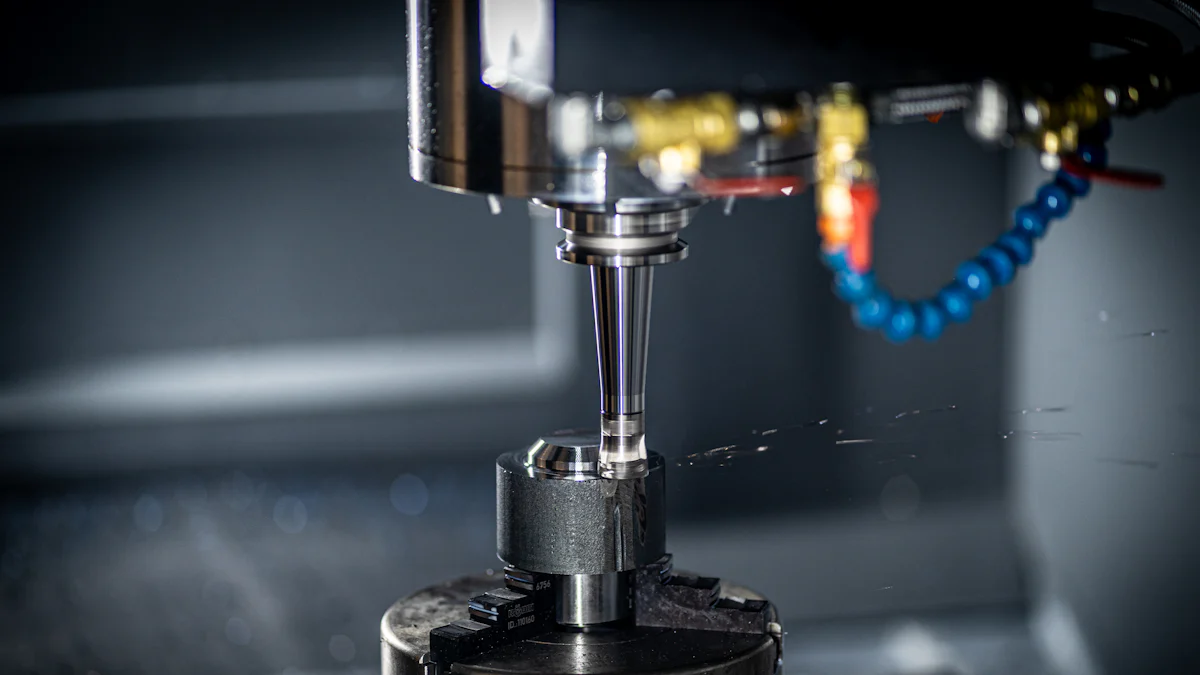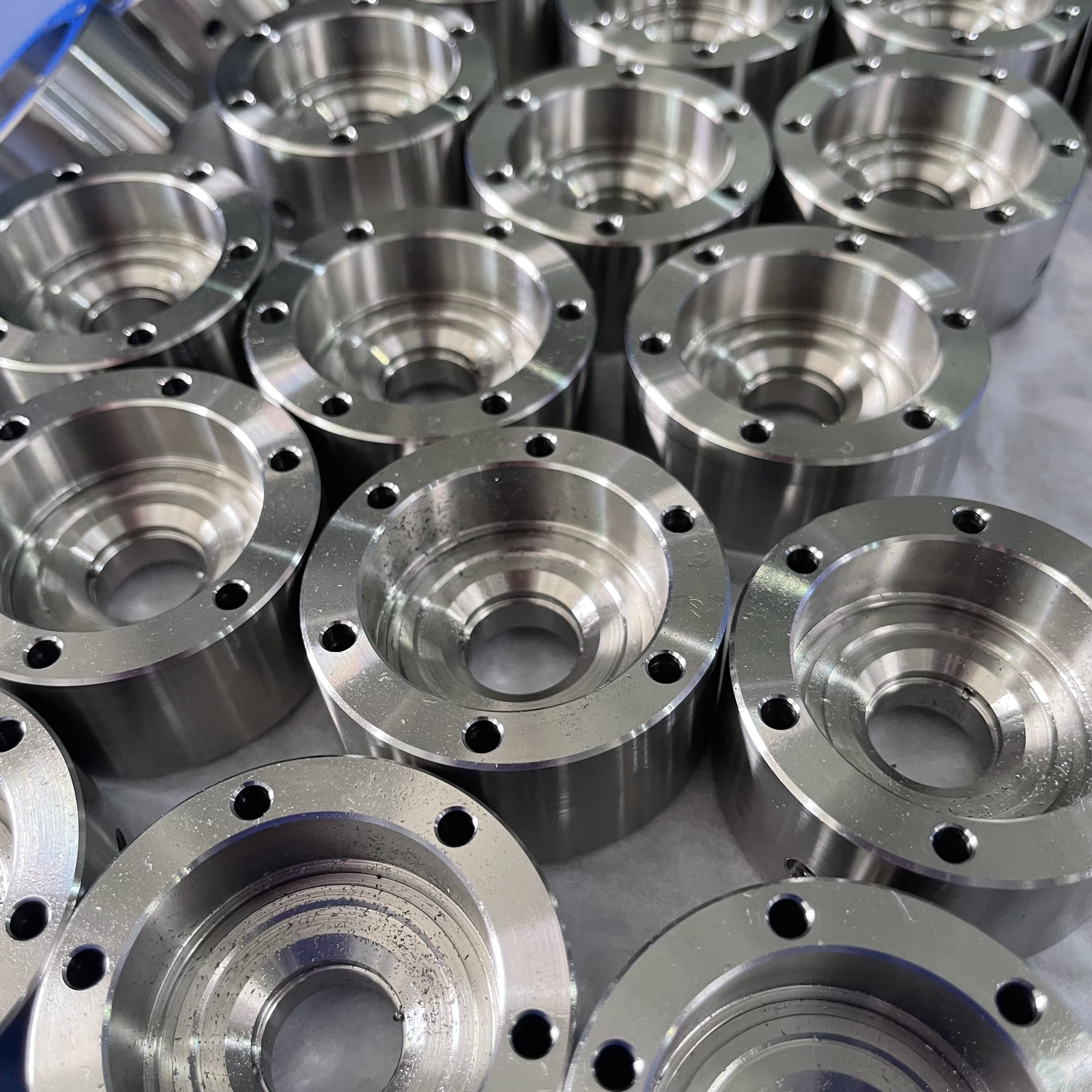3 Essential Tips for Ensuring CNC Precision Machining Clamping Accuracy

Why Accuracy Matters in CNC Precision Machining
In the realm of CNC precision machining, accuracy holds paramount importance. Let's delve into the pivotal reasons why achieving precise accuracy is crucial for this machining process.
The Impact of Accuracy on Product Quality
The level of accuracy in CNC precision machining directly correlates with the overall quality of the end products. When components are machined with high precision, they exhibit superior dimensional conformity and surface finish, leading to enhanced product performance and longevity.
Cost Implications of Inaccurate Machining
Inaccurate CNC precision machining can result in substantial financial repercussions. Components that do not meet precise specifications may lead to rework, scrap, or even product failure, all of which significantly elevate production costs.
Tip 1: Selecting the Right Clamping Tools
When it comes to CNC precision machining, the selection of appropriate clamping tools plays a pivotal role in ensuring optimal accuracy and efficiency. Understanding the different types of clamping tools and considering essential factors are crucial steps in this process.
Understanding Different Clamping Tools
Mechanical Clamps
Mechanical clamps are widely utilized in CNC precision machining for their robust gripping capabilities. These clamps exert firm and consistent pressure on the workpiece, holding it securely in place during the machining process. Their versatility makes them suitable for a wide range of workpiece materials and machining operations.
Vacuum Clamps
Vacuum clamps operate on the principle of suction to secure the workpiece in place. They are particularly effective for holding thin or irregularly shaped workpieces where traditional mechanical clamps may not be suitable. The ability to hold workpieces without obstructing access to specific areas makes vacuum clamps an ideal choice for certain CNC precision machining applications.
Factors to Consider When Choosing Clamping Tools
Workpiece Material
The material of the workpiece is a critical factor when selecting clamping tools. Different materials have varying levels of hardness, surface finish requirements, and susceptibility to deformation during machining. It's essential to choose clamping tools that can effectively accommodate the specific characteristics of the workpiece material, ensuring both stability and protection against damage.
Machining Operation Type
The type of machining operation being performed also influences the choice of clamping tools. Whether it involves milling, turning, drilling, or grinding, each operation demands distinct considerations for securing the workpiece with precision. Understanding the requirements of the machining process is essential for selecting clamping tools that align with the operational needs while maintaining CNC precision.
Tip 2: Proper Workpiece Positioning
In the realm of CNC precision machining, achieving optimal accuracy heavily relies on proper workpiece positioning. The alignment and fixation of the workpiece are pivotal factors that directly influence the precision and quality of the machining process.
The Role of Workpiece Positioning in Achieving Accuracy
Accurate workpiece positioning is fundamental to ensuring that the machining tools interact with the material with utmost precision. It determines the consistency and uniformity of each machining operation, ultimately impacting the dimensional accuracy and surface finish of the final product.
Techniques for Accurate Workpiece Positioning
Use of Positioning Jigs
Positioning jigs are indispensable tools in CNC precision machining for securing workpieces in predefined orientations. These jigs provide a standardized setup for repetitive machining tasks, ensuring consistent positioning and alignment across multiple workpieces. By utilizing positioning jigs, manufacturers can streamline their production processes while maintaining accuracy and efficiency.
Applying the Right Pressure
Applying appropriate pressure during workpiece positioning is crucial for achieving precise clamping without causing deformation or damage to the material. The right amount of pressure ensures that the workpiece remains securely fixed in place throughout the entire machining process, preventing any unintended movement or vibration that could compromise machining clamping accuracy.
Tip 3: Regular Maintenance and Inspection
Ensuring the accuracy of machining clamping in CNC precision machining goes beyond the initial setup. Regular maintenance and thorough inspection are vital components of sustaining optimal accuracy and efficiency throughout the machining processes.
Importance of Regular Maintenance
Proactive maintenance practices are essential for preserving the functionality and reliability of clamping tools. By adhering to a consistent maintenance schedule, manufacturers can mitigate the risk of unexpected tool malfunctions or deteriorations that could compromise accuracy during machining operations. Routine maintenance also contributes to prolonging the lifespan of clamping tools, thereby optimizing their long-term performance.
Inspection Techniques for Ensuring Clamping Accuracy
Visual Inspection of Clamping Tools
Visual inspections serve as an initial assessment method for identifying any visible signs of wear, damage, or irregularities in clamping tools. By closely examining the condition of components such as screws, handles, and contact surfaces, manufacturers can promptly address any issues that may affect machining clamping accuracy. This proactive approach helps prevent potential disruptions in production due to faulty or compromised clamping tools.
Periodic Calibration Checks
Periodic calibration checks are instrumental in verifying the precision and alignment of clamping tools. Through meticulous calibration procedures, manufacturers can ascertain that the clamping mechanisms maintain consistent and accurate gripping forces across varying workpiece materials and dimensions. Calibration checks also enable adjustments to be made to compensate for any deviations that could impact accuracy, ensuring that the clamping tools perform optimally throughout their operational lifespan.
Final Thoughts on Enhancing Clamping Accuracy
Recap of Key Points
Now that we've explored the essential tips for ensuring CNC precision machining clamping accuracy, let's recap the key points to reinforce their significance:
Tool Selection: Choosing the right clamping tools tailored to the workpiece material and machining operation type is crucial for achieving precision and stability.
Workpiece Positioning: Proper alignment and application of pressure during workpiece positioning are fundamental in maintaining accuracy throughout the machining process.
Maintenance and Inspection: Regular maintenance, visual inspections, and periodic calibration checks are vital for sustaining optimal clamping accuracy and efficiency.
Encouragement to Implement These Tips
As you navigate the realm of CNC precision machining, incorporating these tips into your operational practices can yield substantial benefits. By prioritizing accuracy in clamping, you not only enhance product quality but also mitigate potential financial implications associated with inaccuracies. Embracing the proactive approach of selecting the right tools, optimizing workpiece positioning, and implementing thorough maintenance and inspection routines empowers you to elevate the precision and reliability of your machining processes.
Remember, by integrating these fundamental principles into your CNC precision machining endeavors, you pave the way for consistent quality, cost-effectiveness, and operational excellence. Take proactive steps today to enhance clamping accuracy and unlock the full potential of your machining operations.
See Also
Achieving Precision in CNC Machining for Part Production
Becoming Proficient in CNC Precision Machining for Part Production
Introduction to CNC Precision Machining: Fundamentals and Safety Measures
Mastery of CNC Milling for Producing Precise Parts
Exploring the Significance of Precision Engineering in CNC Cutting
About US
Follow Us
Your prototype holds unparalleled significance, and we deeply value its uniqueness. Collaborating with you during the preparation phase for running your prototype or parts is a commitment we gladly embrace. Whether it's a single part or a complex assembly, we are dedicated to selecting the optimal tools and pathways to bring your envisioned product to life.
At Precision Fab CNC Machining, we specialize in producing parts for prototypes, short runs, and high-volume production. Our prototyping machine capabilities extend across metal, plastic, and wood machining, with welding fabrication services available to complement and finalize your prototype if required.
Address
Address: Room320 10F, Building A,Nanshan international building, Dayawan District, Huizhou, Guangdong, 516001 China
Contacts
billy@timaycnc.com

